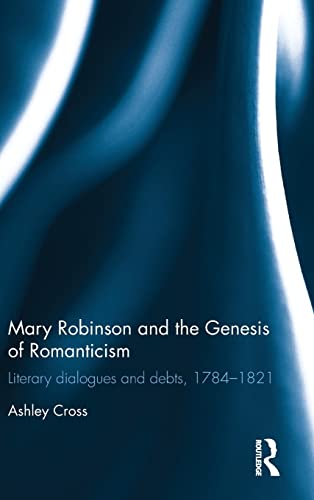

Most ebook files are in PDF format, so you can easily read them using various software such as Foxit Reader or directly on the Google Chrome browser.
Some ebook files are released by publishers in other formats such as .awz, .mobi, .epub, .fb2, etc. You may need to install specific software to read these formats on mobile/PC, such as Calibre.
Please read the tutorial at this link. https://ebooknice.com/page/post?id=faq
We offer FREE conversion to the popular formats you request; however, this may take some time. Therefore, right after payment, please email us, and we will try to provide the service as quickly as possible.
For some exceptional file formats or broken links (if any), please refrain from opening any disputes. Instead, email us first, and we will try to assist within a maximum of 6 hours.
EbookNice Team

Status:
Available5.0
36 reviews
ISBN 10: 1848933681
ISBN 13: 9781848933682
Author: Ashley Cross
First coming to prominence as an actress and scandalous celebrity, Mary Robinson created an identity for herself as a Romantic poet and novelist in the 1790s. Through a series of literary dialogues with established writers, Robinson put herself at the center of Romantic literary culture as observer, participant, and creator. Cross argues that Robinson’s dialogues shaped the nature of Romantic writing both in content and form and influenced second-generation Romantics. These dialogues further establish the idea of Romantic discourse as essentially interactive and conversational, not the work of original geniuses working in isolation, and positions Robinson as a central player in its genesis.
Part 1: Romantic Robinson – Poetic Dialogues
Harping on Lyrical Exchange: Coleridge and Robinson
Illegitimate Influences: Robinson, Charlotte Smith, and the Romantic Sonnet
Romantic Authorship and the Morning Post Aesthetic: Robert Southey
From Lyrical Ballads to Lyrical Tales: Wordsworth, Reputation, and Romantic Genius
Part 2: Radical Robinson – Dialogic Fictions
Dangerous Dialogues and Queer Panic: Walsingham and Caleb Williams
Vindicating the Writing Woman: Robinson’s Response to Wollstonecraft
Part 3: Posthumous Robinson – Early Nineteenth-Century Responses
Resurrecting Robinson: Charlotte Dacre’s Hours of Solitude
“Sick of the same bruise”: John Keats, Robinson, and the Forlorn Body of Sensibility
lesson 5 romanticism and realism quizlet
is mary robinson alive
theories of romanticism
mary robinson yours analysis
mary robinson writer
Tags: Ashley Cross, Mary Robinson, Genesis, Romanticism, Literary Dialogues